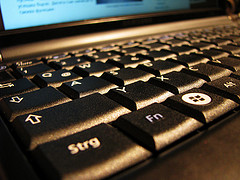- 5 reads

Let’s face it – for better or worse, a large part of the day is spent sitting at the computer. The average desktop consumes around 130 watts while the average notebook eats about 45 (and this does not take into account monitors or other peripherals) and these numbers can be multitudes greater depending on the functionality of the machine. For the majority of users, such functionality is superfluous when the primary needs of the machine are internet and email capability, word processing, and basic multimedia functions. Why not then embrace a stripped down, resource and energy-efficient machine suited to such basic needs? Such is the philosophy behind the netbook.
Coming in a small-form factor with screen sizes under 10”, netbooks generally have sub-2.0 GHz processors and under 2 GBs of ram, just enough for everyday needs. The majority utilize the novel Intel Atom processor which has a Thermal Design Point (TDP) of only 2.5 watts. Compare that to Intel's latest non-mobile offering, the Core i7, which rates at around 130 watts. The possibilities for energy efficiency go even further with some models' use of solid state drives. According to Jack Wallen of Zdnet.uk, because of the lack of moving parts in an SSD, a longer lifespan, and thus lessened consumer waste, can be expected.
Jaymi Heimbuch of Treehugger.com notes that these differences allow the netbook to be “cheaper to make, cheaper to buy, [and] cheaper to run.” The computer's smaller size translates further to a lessened usage of toxic materials in manufacturing. According to Intel, the Atom processor is made in a completely lead-free process. Jack Wallen further suggests that using some form of the Linux operating system rather than Microsoft Windows allows for even greater energy efficiency. With Linux, it is possible to match a lightweight distribution exactly to the system's components. Such targeted Linux versions exist for both the Acer Aspire One as well as the Asus Eee PC. Furthermore as internet-based cloud computing catches on, even less concrete system resources will be needed. This translates to less power required by the machine. For the even more conscientious consumer, a variety of netbook models have received EPEAT ratings. Most noteworthy are the Asus N series which received a gold rating and the HP Mini which holds a silver. It can be expected that even more companies will follow suit, striving for an affordable and even greener machine in a world greatly in need of such.
Like any system with a narrow aim, the netbook is not without drawbacks. Primarily, it is not suited to all tasks. Anything resource intensive will be difficult if not impossible. While not geared towards playing any graphically stunning games or editing a feature film, for most basic tasks, the netbook is perfectly suitable and the world is catching on. The IDC expects sales to hit 22 million in 2009, nearly twice the 11.4 million sold in the past year.

